
Pasir Ris is a planning area and residential town located in the East Region of Singapore. It is bordered by Tampines and Paya Lebar to the south, Sengkang to the southwest and Changi to the east. The planning area also shares riverine boundary with Punggol to the west, separated by the Serangoon River, as well as having a maritime boundary with the North-Eastern Islands planning area, across the Straits of Johor.
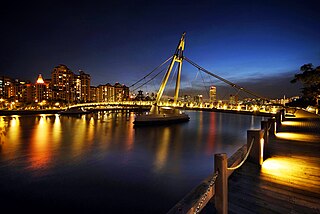
Kallang is a planning area and residential zone located in the Central Region of Singapore.
Simei is an estate located in Tampines Town in the Eastern Region of Singapore. The name Simei is pinyin for "Four Beauties" in Chinese. Formerly known as Tampines South, it was officially renamed to Simei in 1985.
Chinatown is a subzone and ethnic enclave located within the Outram district in the Central Area of Singapore. Featuring distinctly Chinese cultural elements, Chinatown has had a historically concentrated ethnic Chinese population.
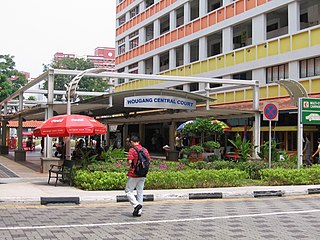
Hougang is a planning area and mature residential town located in the North-East Region of Singapore. It is the largest housing estate in Singapore based on land area, and is home to 247,528 residents as of 2018. Hougang planning area is bordered by Sengkang to the north, Geylang to the south, Bedok to the southeast, Toa Payoh to the southwest, Serangoon to the west and Paya Lebar to the east.

Holland Village, often abbreviated as Holland V, is a neighbourhood located along the boundary between the planning areas of Bukit Timah and Queenstown in the Central Region of Singapore.

Jurong East is a planning area and residential town situated in the West Region of Singapore. It borders Jurong West and Boon Lay to the west, Clementi to the east, Tengah and Bukit Batok to the north and Selat Jurong to the south.
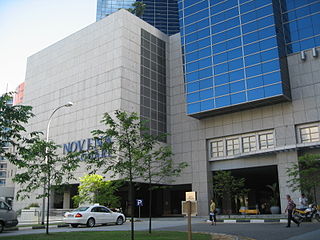
Novena is a planning area located within the Central Region of Singapore. Novena is bounded by Toa Payoh to the north, Bukit Timah to the west, Tanglin to the south and Kallang to the east. While Novena is not classified as a "new town" by the Housing and Development Board (HDB), the estate of Whampoa within the subzone of Balestier constitutes part of the Kallang/Whampoa New Town.
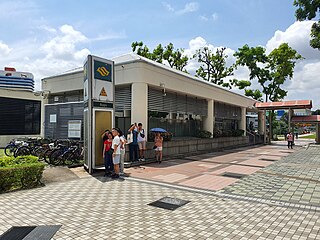
Bugis MRT station is an underground Mass Rapid Transit (MRT) interchange station on the East–West (EWL) and Downtown (DTL) lines, in Bugis, Singapore. The station is located underneath the junction of Rochor Road and Victoria Street. Various developments surrounding the station include Bugis Junction, Raffles Hospital and the National Library. The station is also close to Kampung Glam.
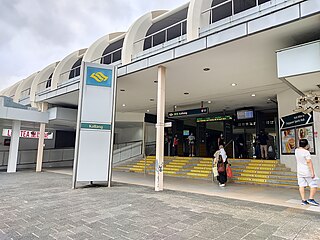
Kallang MRT station is an above-ground Mass Rapid Transit (MRT) station on the East West line in Kallang, Singapore. It is located next to the Kallang River and along Sims Avenue at the junction of Lorong 1 Geylang. Kallang station served as the nearest MRT station to the National Stadium and Singapore Indoor Stadium, until Stadium MRT station on the Circle line opened on 17 April 2010. However, the station is still linked to the Singapore Sports Hub via a sheltered walkway.

Bugis Junction, formerly known as Parco Bugis Junction is an integrated development located at Victoria Street, Middle Road and North Bridge Road in Bugis, Downtown Core in Singapore. The development consists of a shopping mall, an office tower and the InterContinental Singapore Hotel.
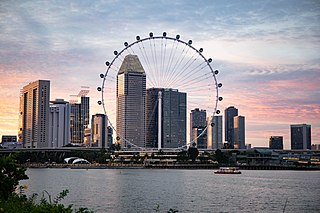
This article shows the notable future developments in Singapore. Most of them are currently under construction with most to be completed within the next five years.

Tanglin is a planning area located within the Central Region of Singapore. Tanglin is located west of Newton, Orchard, River Valley and Singapore River, south of Novena, east of Bukit Timah, northeast of Queenstown and north of Bukit Merah.

Hougang Mall, previously known as NTUC Hougang Mall, is a suburban shopping mall in Hougang, Singapore. It is near Hougang Central Bus Interchange, as well as Hougang MRT station.

Middle Road is a road in the Central Area of Singapore, stretching along the Downtown Core and Rochor planning areas. It starts from its junction with Selegie Road and ends at its junction with Nicoll Highway. Middle Road was already in existence in early Singapore, appearing in George Drumgoole Coleman's Map of Singapore in 1836. The area around Middle Road was the original settlement of the Hainanese immigrant community, a community noted for its active role in the food and beverage history of Singapore. From the late 19th century until the Second World War, the area around Middle Road, Hylam Street and Malay Street was also a bustling Japanese enclave known for its brothels of Karayuki-san and traditional shops run by the Japanese immigrants.
Prostitution in Singapore in itself is not illegal, but various prostitution-related activities are criminalized. This includes public solicitation, living on the earnings of a prostitute and maintaining a brothel. In practice, police unofficially tolerate and monitor a limited number of brothels. Prostitutes in such establishments are required to undergo periodic health checks and must carry a health card.

Bugis+, formerly Iluma, is a 10-storey shopping mall located 5 minutes from Bugis MRT station. It is located within the Bugis district of Singapore and opened on 28 March 2009.
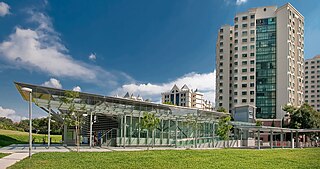
Lorong Chuan is a subzone and a precinct located in the town of Serangoon in the North-East Region of Singapore.
Bugis Street (妖街皇后) is a 1995 Hong Kong-Singapore co-production directed by Yonfan, about the lives of Singaporean transvestites in a bygone era. It was a minor hit at the box office with a sexually-explicit R(A) rating, male full-frontal nudity and its nostalgic evocation of a seedy but colourful aspect of Singaporean culture, prior to the redevelopment of Bugis Street into a modern shopping district and the eradication of transvestite activities in the area.

Bidadari is a housing estate and a subzone of Toa Payoh planning area, in the Central Region of Singapore.























